Information about aya sophia in Istanbul: Why is it controversial?
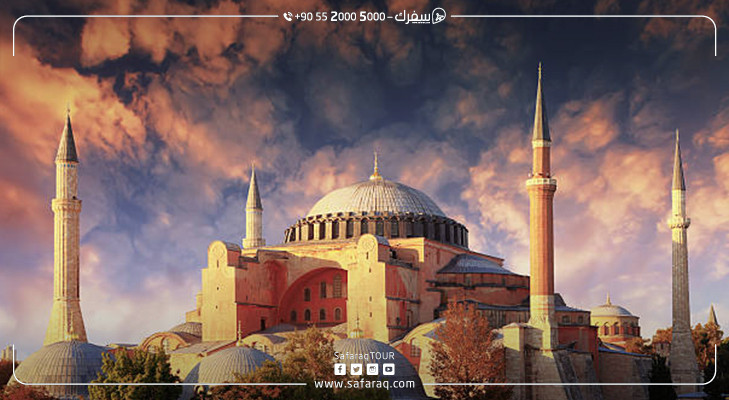
Hagia Sophia History: Information about Hagia Sophia
Located on the European side of Istanbul, Aya Sofya Mosque is one of the most prominent symbols of the Constantinople Conquest (Istanbul) by the Ottoman Sultan, Mehmed Fatih, on 29th May 1453, after it remained insurmountable to the Islamic conquests for several centuries.
Aya Sofia or aya sophia , which was converted from a church into a mosque after Constantinople Conquest, is one of the world’s most famous artistic and architectural monuments and most-visited museums.
Seen as “the 8th wonder of the world” by historians, this majestic edifice was built in 537. It is an impressive monument, located in the Sultan Ahmed District, used for 481 as a mosque before it was converted to a museum in 1934.
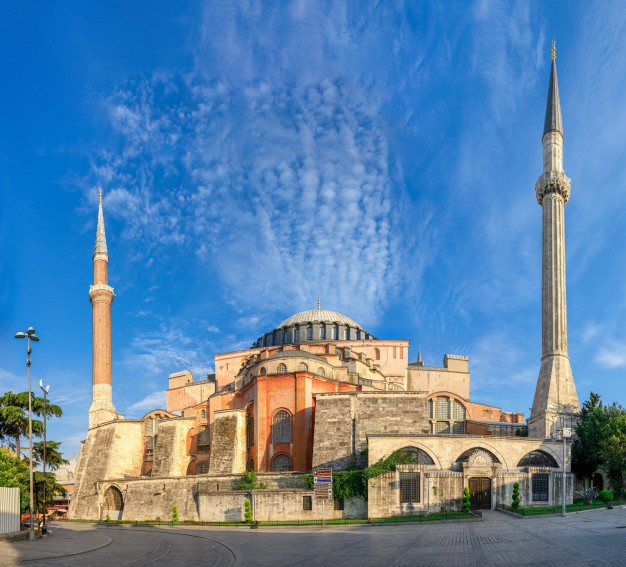
Historically speaking, the 2020 year was a turning point in the monument’s history when the Turkish Supreme Administrative Court overturned the cabinet decision issued in 1934, reopened Aya Sofia for worship and prayer, and transferred its affiliation from the Ministry of Culture and Tourism to the Presidency of Religious Affairs.
1. Hagia Sophia Cathedral
Hagia Sophia was built during the Eastern Roman Empire (395 – 1453) in its capital, Byzantine (Istanbul), before it was destroyed by the Roman Emperor Septimius Severus. The church was rebuilt again during the reign of the Roman Emperor Constantine II in 360, called Hagia Sophia (Holy Wisdom).
However, it was destroyed for the second time after 44 years in a rebellion by the city’s dwellers due to the erection of a silver statue of Evdokia, the Eastern Roman Emperor Arcadius’ wife, in front of the Hagia Sophia.
Hagia Sophia was rebuilt in 415 during the reign of Emperor Theodosius II, ruled after Arcadius. It was the biggest church in the Byzantine till 532 when burnt and destroyed in the “Nica Rebellion” during the reign of Justinian I.
After 39 days of the Nika Rebellion, Emperor Justinian (Justinian I) started rebuilding Hagia Sophia, which took five years to be completed in 537.
About 100 architects took part in the construction work, supervised by two senior architects. Every architect worked with 100 workers. The building was rebuilt in a short time, five years and ten months, using bricks instead of wood as stones are resistant to fire and weather conditions.
Justinian asked the governors and kings under his rule to send the finest types of marble to reconstruct Hagia Sophia again. Governors and kings hastened to send the best marble columns, iron bars, and windows, removed from temples, baths, and palaces from all over the empire and secured sending them to Istanbul.
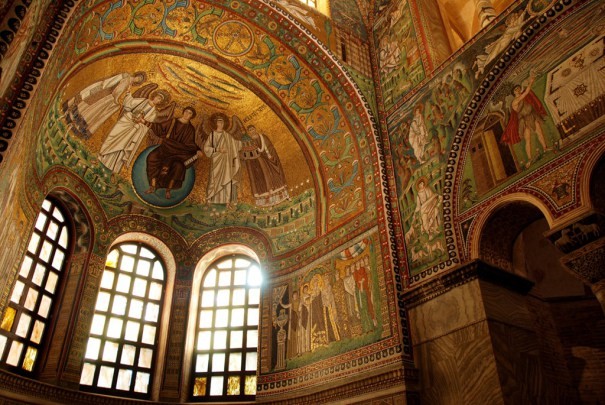
The Persian style was followed in building hagia sufia , using the “elephant’s legs” style. Limestones and bricks were used to make the walls, while bricks made from Rhodes Island’s soil, known for their lightweight, were used to make the dome. The interior decorations were as impressive as its dome.
The opening ceremony was held on 27th December 537, with the participation of Emperor Justinian I.
Hagia Sophia could not maintain its original architectural shape due to the ongoing reconstructions and restorations against the backdrop of natural disasters and wars in the region.
2. Aya Sofia Mosque
The conquest of Constantinople (Istanbul now) and converting Hagia Sophia into a mosque is the most famous and prominent event in Turkish Islamic history.
After a long siege, Sultan Mehmed Fatih managed to conquer the city on 29th May 1453, headed to Aya Sofia, planted his flag there as a symbol of victory, and threw an arrow towards the dome.
That is how he recorded the conquest. He walked towards one of the temple’s corners, prostrated, and offered prayer, turning this place from a church into a mosque.
Four cylindrical-shaped minarets with Ottoman style were added, and huge paintings with the beautiful names of God, the prophet’s name (Peace be upon him), and Muslim Caliphs’ names were placed in Arabic.
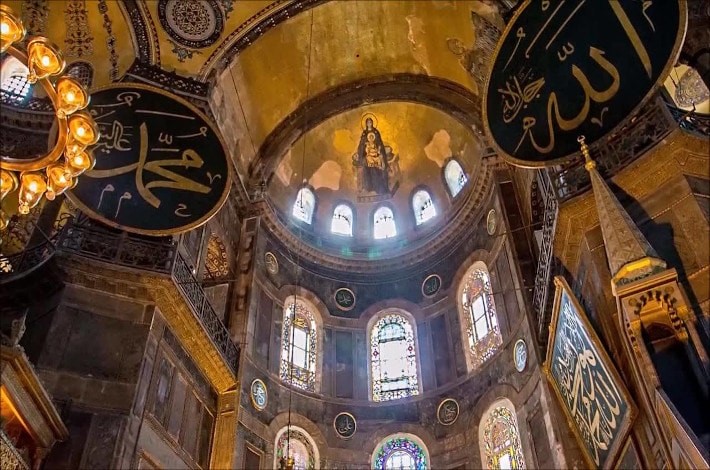
According to official Turkish sources, by conquering Istanbul, Mehmed Fatih received the title of Roman Emperor; consequently, he became the owner of properties registered for the Byzantine family in accordance with this law. Hagia Sophia was registered for Sultan Mehmed Fatih and his endowment. In addition, an official copy of the title deed was issued in Turkish during the reign of the Turkish Republic.
3. Hagia Sophia Museum
Mustafa Kemal Ataturk, the first president of the Turkish Republic, turned Hagia Sophia into a museum in 1934, making it a destination for millions of tourists who visit it to enjoy the beauty of the mixture of Islamic and Christian decorations and ornaments.
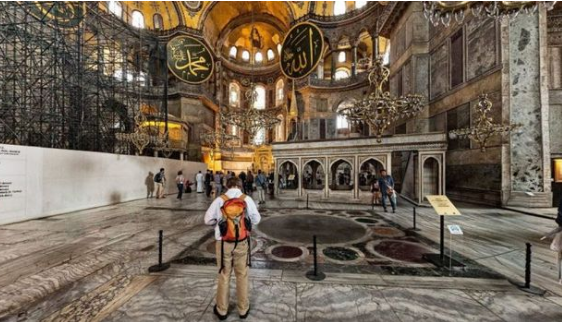
4. aya sophia Cemetery
Hagia Sophia cemetery is part of the aya sophia complex. It has graves for five Ottoman Sultans who ruled the Ottoman Empire during the 16th and 17th centuries: Muhammad III, Selim II, Murad III, Ibrahim I, and Mustafa I, as well as some of their children. The cemetery has an impressive architecture ottoman style, with attractive calligraphy in Arabic.
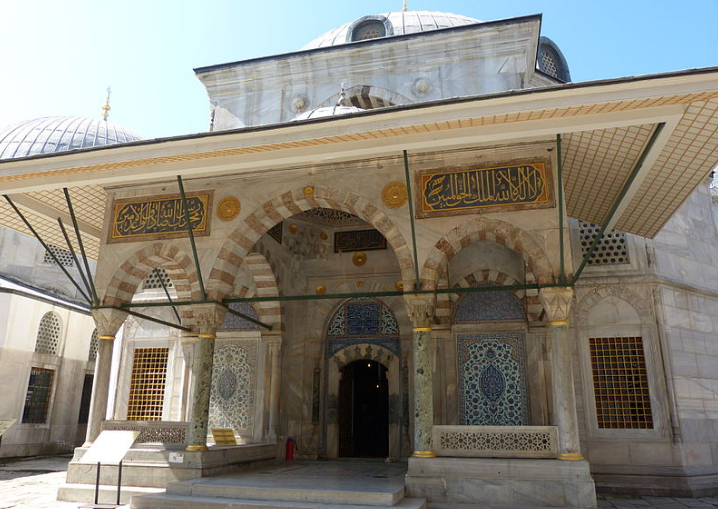
Why is aya sophia Controversial? Is It a Church or a Mosque?
There were many calls for reconverting Hagia Sophia into a mosque and a church by Muslims and Christians, respectively. However, the Turkish government decided to turn it back into a mosque building upon Sultan Mehmed Fatih’s decision of converting it into a mosque. It is also said that Sultan Mehmed Fatih bought this church from the Romans with his own money, turned it into a mosque, and endowed it to Muslims.
During a speech on reopening aya sophia to worship as a mosque, the Turkish president, Recep Tayyip Erdogan, emphasized that the Turkish government’s decision to turn the mosque into a museum in the 1930s was a big mistake. “The decision was not only a betrayal for history but also a law violation because Hagia Sophia is not state property, rather a property for the endowment of Sultan Mehmed Fatih,” said Erdogan.
How to Get to Hagia Sophia?
Hagia Sophia is located in the Sultan Ahmed district, easily reached by the tramway. Visitors can get by tramway and head towards Sultan Ahmed station; the mosque is a 5-minute walk from the station. Or they can use any taxi to get there.
The Architectural Design of Hagia Sophia
The main building is 82 meters high, and its dome is 55.6 meters high, with a 31.7-meter diameter and 40 windows. The building is placed on four massive columns made of green marble; each is 24.3 meters high. At the end of the 20th century, four hidden tilted pillars were discovered against the upper dome, meaning they are the oldest existing pillars in the history of architecture.
The building can be entered through nine doors. It has a basilica style (ancient Roman architecture) known by the Greeks in building their religious monuments and found in Rome. Their buildings are rectangular-shaped from inside and outside, with a spacious frontal atrium, surrounded by a long porch leading to side halls, one of which is the main hall, where the colossal dome rest on.
Photos of Hagia Sophia from Inside
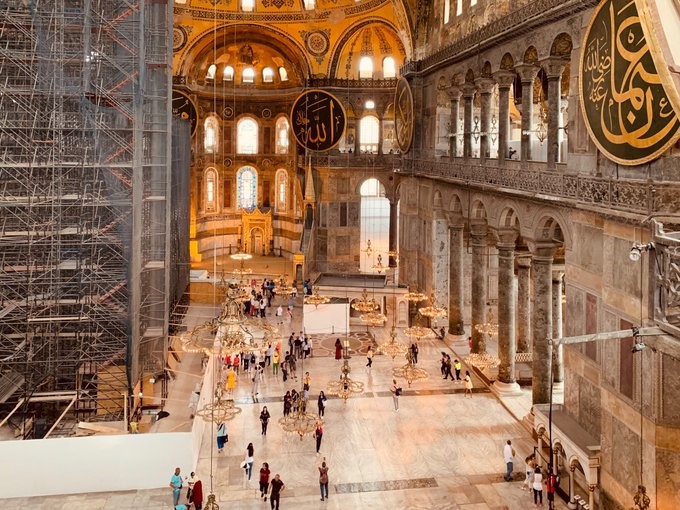
The Main Hall
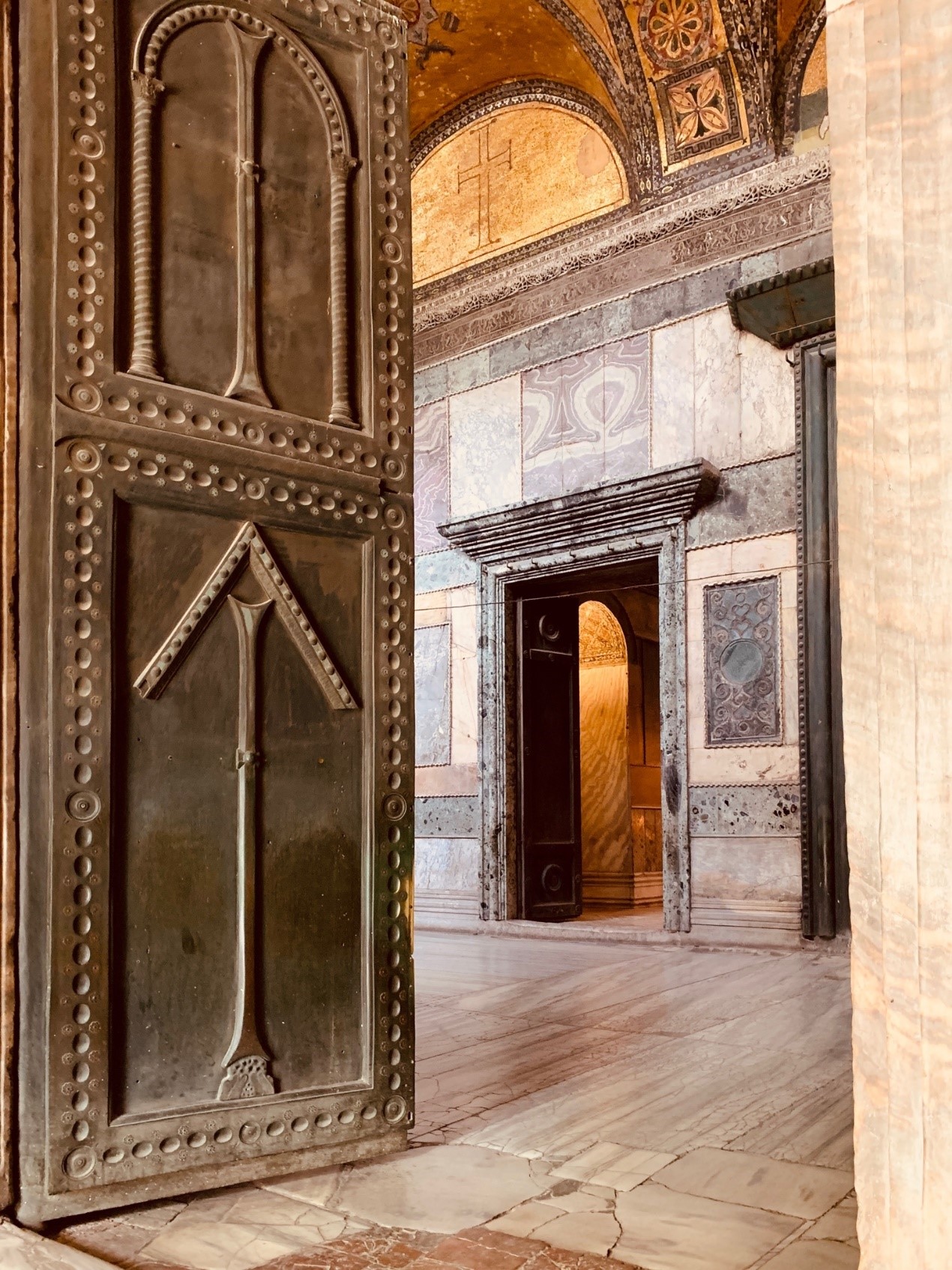
Halls Surrounding Hagia Sophia and Doors Leading to the Main Hall
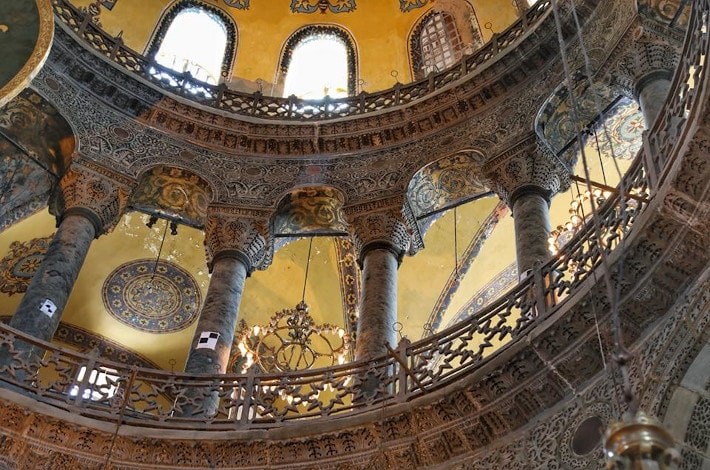
Upstairs
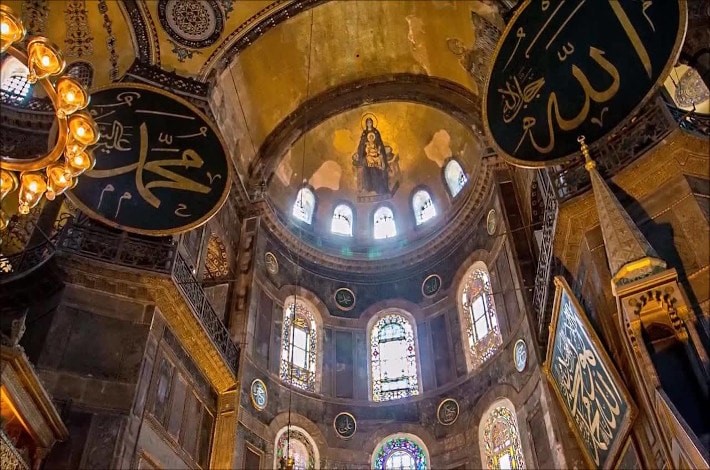
Hagia Sophia’s Main Hall Ceiling from Inside
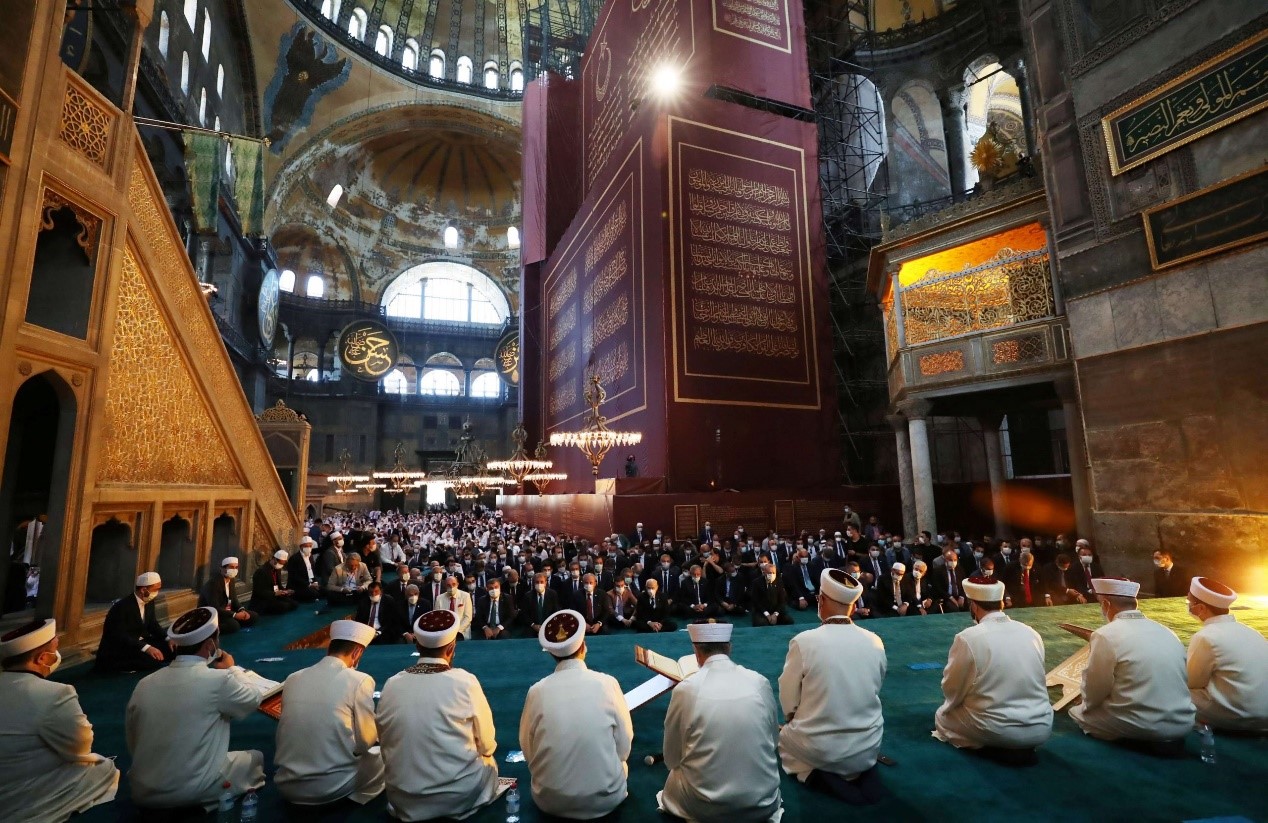
Aya Sofya Holds the First Prayer for 86 Years
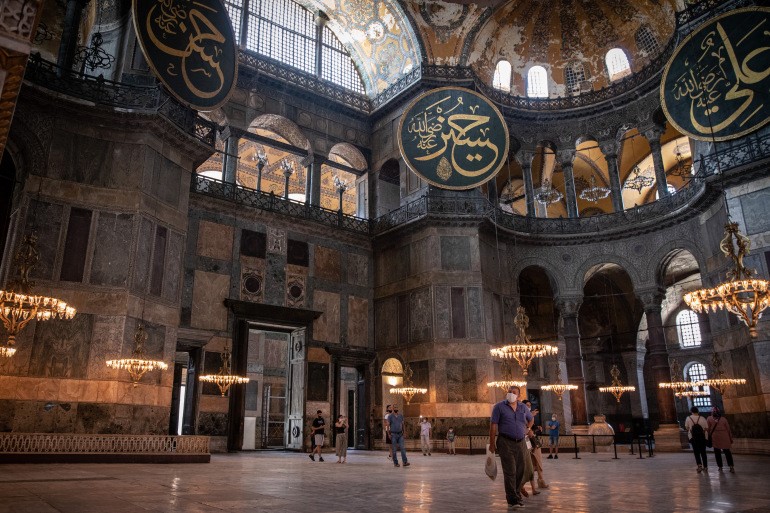
Hagia Sophia in 2020
Tourist Activities in Hagia Sophia
- Offering prayer in Aya Sofia and enjoying watching its impressive architecture and attractive decorations
- Taking photo ops
- Enjoying time at the garden against Hagia Sophia
- Having a visit to Hagia Sophia cemetery, which has five tombs
- Enjoying delicious food at one of the nearby restaurants
FAQs about Hagia Sophia
Hagia Sophia is originally a Greek name, meaning “Holy Wisdom.” According to historical studies, Hagia Sophia was an Egyptian Coptic saint born in Badrashin, Giza.
She used to worship idols, but her feelings were directed towards Christianity due to her Christian neighbours, who persevered going to church and spread love and affection.
Sophia, whom her friends and neighbours influenced, wanted to learn more about Christianity and regularly went to church to learn. A few days later, she converted to Christianity.
However, the Byzantine ruler saw that her deeds angered the gods and ordered her to return to idolatry, but she refused. So, he ordered his soldiers to torture her with whips, cut off her tongue, and sent her into a dark cell. Finally, he ordered his guards to decapitate her.
When King Constantine and his mother, Queen Helena, heard of the many blessings of the saint in Egypt, he ordered to transfer her body to Istanbul after he had built a great church in her honour.
King Constantine and his mother, Queen Helena, built it in 325 AD. After being burnt and destroyed, Hagia Sophia was rebuilt in 5 years by Emperor Justinian (Justinian I) to be completed in 573.
About 100 architects took part in the construction work, supervised by two senior architects. Every architect worked with 100 workers.
Read more on Safaraq
The Most Beautiful Places in Alanya
Information about Baghdad Street
Edited by Safaraq Tourism
Did you like our topic? You can share it with your friends.Featured tourist services
We offer top tourist services with the highest standards of quality and luxury with 24/7 follow-up.

Flight reservations

Tourist programs

Hotels and Resorts

Car Reservation

Group Tours

VIP Services
Subscribe To Our Newsletter
Find More About The Latest Safaraq






















 Home
Home




